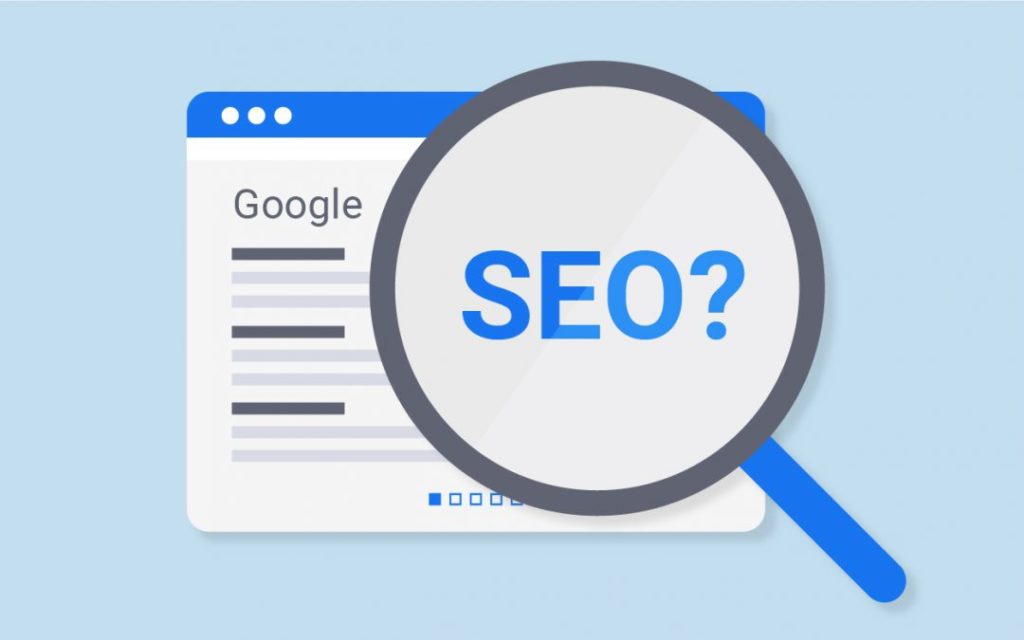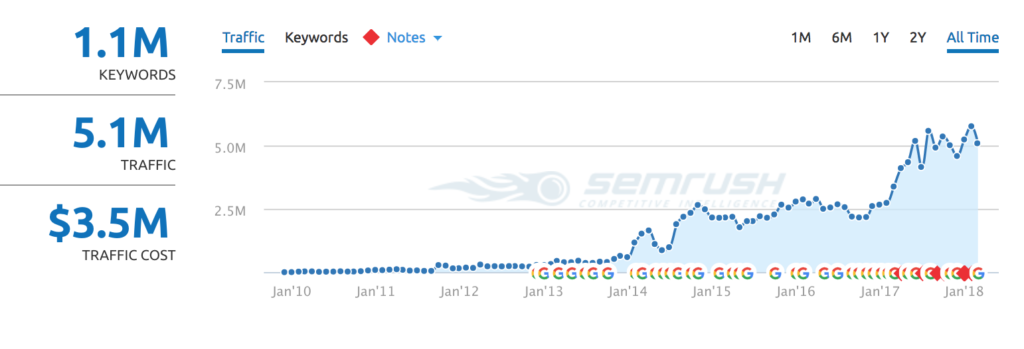Brief history
Search engine optimization has been around for as long as there have been search engines. Google was not the first search engine.
That distinction goes to Archie, which launched in 1990 and was the first query-able search engine. In their early days, websites like Archie manually listed the websites that existed.
Fast forward to the late 90s and a whole group of search engines, from Excite to Lycos and AltaVista, sprang up to give their own unique take on organizing the young web and allowing people to search it. So many sprang up, in fact, that a meta search engine called DogPile started to let people search all of the various search engines at once in hopes of finding what they were looking for. DogPile still exists:

BackRub, which was the initial name for the company that has now become become a verb and synonymous with search (yes, I’m talking about Google), started in 1996 and revolutionized the search world because they ranked websites based off popularity and not the old ways of organizing information like alphabetically or pay-to-play.
In the over two decades since, Google has grown to literally billions of queries per day, their next largest competitor (Bing) has 5.1% market share compared to Google’s 86.87%, and literally billions of dollars are transacted online from searches that originate with a text (and increasingly voice) search online.
The search engines have changed over time and continue to change with the times, especially as mobile has grown into likely over 60% of overall queries. Tactics have changed over time as the search engines have used algorithm changes to crack down on spam and to make adjustments to improve search quality.

On the SEO industry front, the latest data we have is that it is worth $65 billion per year, with projections of $79 billion by 2020. Search is big money because businesses recognize that the traffic coming to their site can be monetized and used to build a big business.
How SEO works
At its core, SEO is driven off these three main areas:
- Solid technical structure that allows the search engines to crawl and discover content and determine what the page is about;
- Content that answers the searcher’s intent and provides a great experience to them through quick load times, optimized flows, and ability to accomplish their task (whether that is information or a purchase);
- Links from other websites that count as “votes” that the information is worthy of being sent visitors.
If you’re reading this guide and have a workable knowledge of SEO, you will note that I have not mentioned anything about “link juice”, “canonical tags”, or “title tags” among various other things.
At the end of the day if you build a great product using a trusted technology, help your customers do what they came to accomplish (through content and a great experience), and get others online talking about and linking to your website then you will do very well with SEO.
Tactics come and go and technologies change, but these three have never changed for SEO.
Who needs SEO
In the 21st century, if you do business online then you need to prioritize SEO as a viable growth channel for your business. If you are a software-as-a-service (SaaS) company, then your users are online and hopefully looking for solutions to the problems that they have.
I do not care if you make it easier for someone to run payroll or to automate their social media channels. Users are searching for your product and for information about how to solve their problem, and you have the opportunity to get your website in front of them exactly at the time that they are looking for someone to help them.
That is the power of SEO.

Dedicated SEO efforts on this particular site began early January 2017. Screenshot via SEMrush.
Who needs to be involved in the company
SEO is a full company effort. You need all of the following involved if you are going to make a meaningful difference in your organic traffic and therefore your business:
- Business/finance, because they sign off on the budget to invest in SEO and are the ultimate answer to “is the work we are doing working?” because they are intimately familiar with the business’s bottom line;
- Product, because they determine what actually gets built and prioritized on the site;
- Engineering, because they are the ones actually building what needs to be done;
- Marketing, because their work supercharges the SEO work done onsite to help it rank even better than before;
- Executive team, because without their support the necessary people will not be assigned and progress will move slower than necessary.
Over the last decade that I have worked in SEO, I have seen every type of client imaginable. From businesses that are going out of business and hoping to use SEO to save their business, to some of the fastest growing startups and publicly traded companies whose executives understand the power of SEO, I could point you to a hundred different case studies of companies who have done well and who have not.
The companies that win have full-company buy-in from the top to the bottom, and the companies that fail to do well with SEO are not organized, deal with infighting between the teams, don’t trust the SEO process to work consistently, and think that they can just implement one part of the SEO equation and still win.

